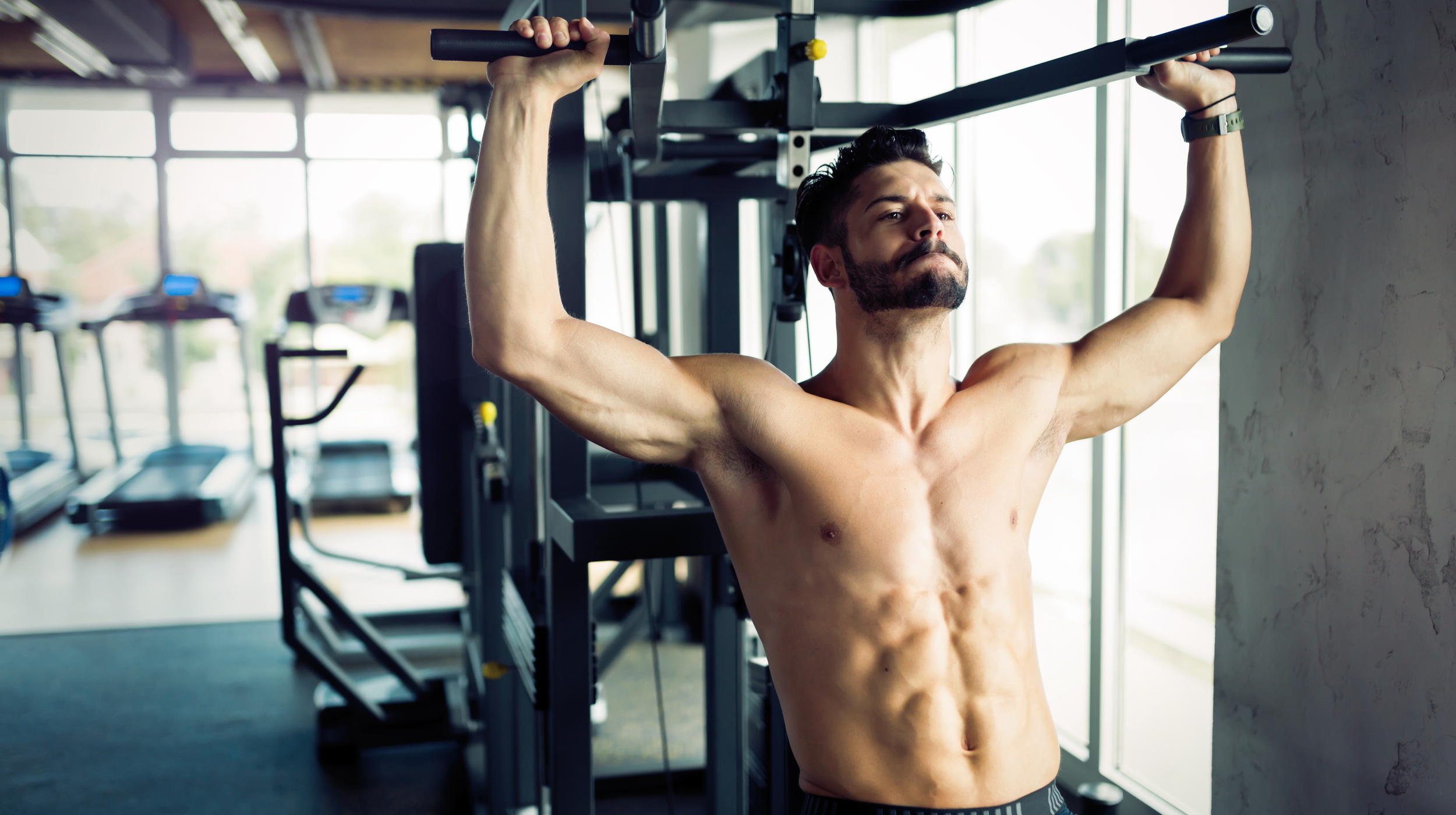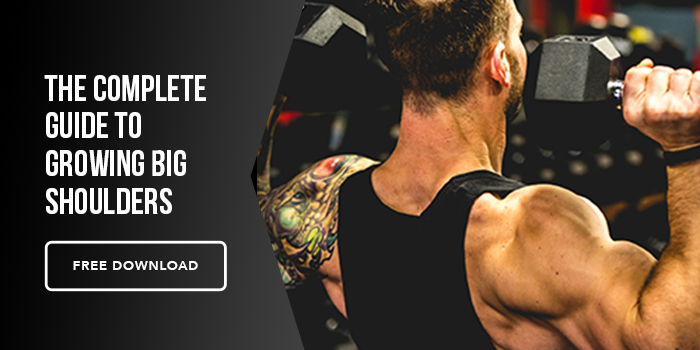Shoulders give that nice 3D look. When we see all the marvel superheros, one of the first things we probably pick up on that we don’t even realize is their shoulders. It makes them look broader, manlier, and just JACKED overall. Even if the rest of their arm and chest was small, just by simply having a capped shoulder, they look great with or without a shirt. Needless to say, many guys are seeking optimal growth for shoulder development.
Below are my tips for building out the shoulders if you are struggling. I have a whole series of articles of these for each muscle group so be on the lookout for the other articles.
Frequency: Should be trying to stimulate the shoulders 2-3 times a week with the 10-12 total weekly sets, to keep maximizing the muscle building signal that a weightlifting exercise creates on that particular muscle (signal drops after 24-48 hours so you need to recreate that signal every time which explains the increase in frequency vs traditional body part split). Every 4-6 weeks, you could change up the exercise if you find you are no longer making progress, not feeling it work the muscle, or need to mix it up.
Intensity (Sets/Reps):
10-12 total sets for the week, split up evenly among your 2-3 workouts that include shoulders.
Every 3-4 weeks you should be changing the rep scheme or going up in weight, to create a newer stimulus that’ll help further progression as you get more comfortable with a lift and weights start increasing less and less per week.
Weeks 1-4 - 6-8 reps (more of an intensity phase focused on strength)
Note: You can go higher rep for the more isolated movements as they probably don’t need to be in such a low rep range and could cause a bigger injury risk.
Weeks 5-8 - 10-12 reps
Weeks 9-12 - 12-15 reps (more of an accumulative phase focused on volume)
For more advanced lifters (3-4+ years proper lifting): If you find your shoulders are a lagging body part, you can also increase the total weekly sets by 1-2 sets each week, AS LONG AS you are properly recovering. This will help ensure continued progression during a high volume phase, as your body adapts to its minimum effective dose for a particular muscle group and works towards that maximum recoverable volume. Again, should only be done to 1-2 muscles groups in a cycle, NOT all.
Muscle Connection!
If your shoulders (or any muscle for that matter) aren’t growing as much as the rest and falling behind, it’s most likely because you aren’t hitting that muscle. Just because you did a bunch of overhead presses, and what you thought were effective side raises, doesn’t mean you ACTUALLY hit the shoulders. Confused?
Your body only knows movement. It doesn’t know you want pumpkins for shoulders. It just knows you are working with a heavy weight and will do whatever it takes to move that weight. So in the case of heavier lateral raises, as you get tired, have you ever noticed you start to use your traps more? Or come up on your toes to swing the weight up? Then you aren’t hitting your shoulders. Focus on the connection to the muscle. Go lighter on the weight, and focus on being able to hit a peak contraction on each movement. Check your ego at the door. Most people will have to drop down to 10-15lbs to really feel the muscle. Play around with SLIGHT changes to the angle to see if you feel a better contraction more in different areas. I have found for myself, playing around with this and finding where that sweet spot is made all the difference in shoulder growth.
Exercise Selection
For simplicity sake, I’ll break it down into compound and isolated exercises. Typically (although not always), you would start with more compound exercises in a workout because they recruit the most muscles, and tax the nervous system the most. You want to be as fresh as possible for these as to avoid risk of injury. These also make more sense to cycle through into the lower rep ranges (1-8) so that you can recruit as many muscle fibers as possible due to how many other muscles are also helping with the movement.
Compound Shoulder Exercises:
Front delts - Overhead press, military press, dumbbell shoulder press, Z-press, push press
For isolation exercises, they usually target specific muscle groups (in this case just the shoulder), rather than a whole bunch of secondary muscles. They’re recommended to do after the compound ones, as the risk of injury is lower. The reason being, these are usually done on machines, don’t tax as many muscles, don’t require as much stability, and don’t usually ramp up in nearly as much weight as a compound one would.
Isolation Shoulder Exercises:
Front delts - front raises, plate raises
Side delts - lateral raises, seated lateral raises, incline lateral raises
Rear delts - rear cable flyes, bent over flyes, single arm flyes,
Think of the isolation exercises as a bonus way to add volume to make sure you’re maximally stimulating the shoulders. However with shoulders, it can be a little tricky because there are many heads to them and thus, diff ways to stimulate it, but focus on the bigger compound movements first. Add in the smaller exercises as you find overtime certain areas falling behind. Rear delts tend to be very commonly left behind because you can’t see them in the mirror. A lack of full shoulder development a lot of times tends to be because lifters neglect hitting all heads. Make sure you are addressing this issue!






